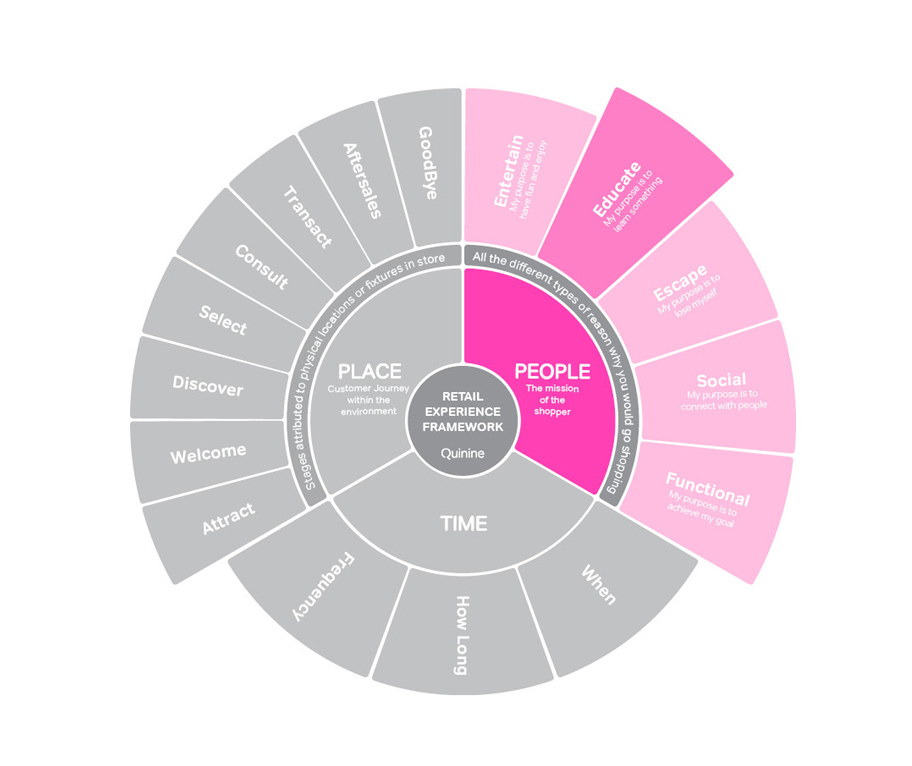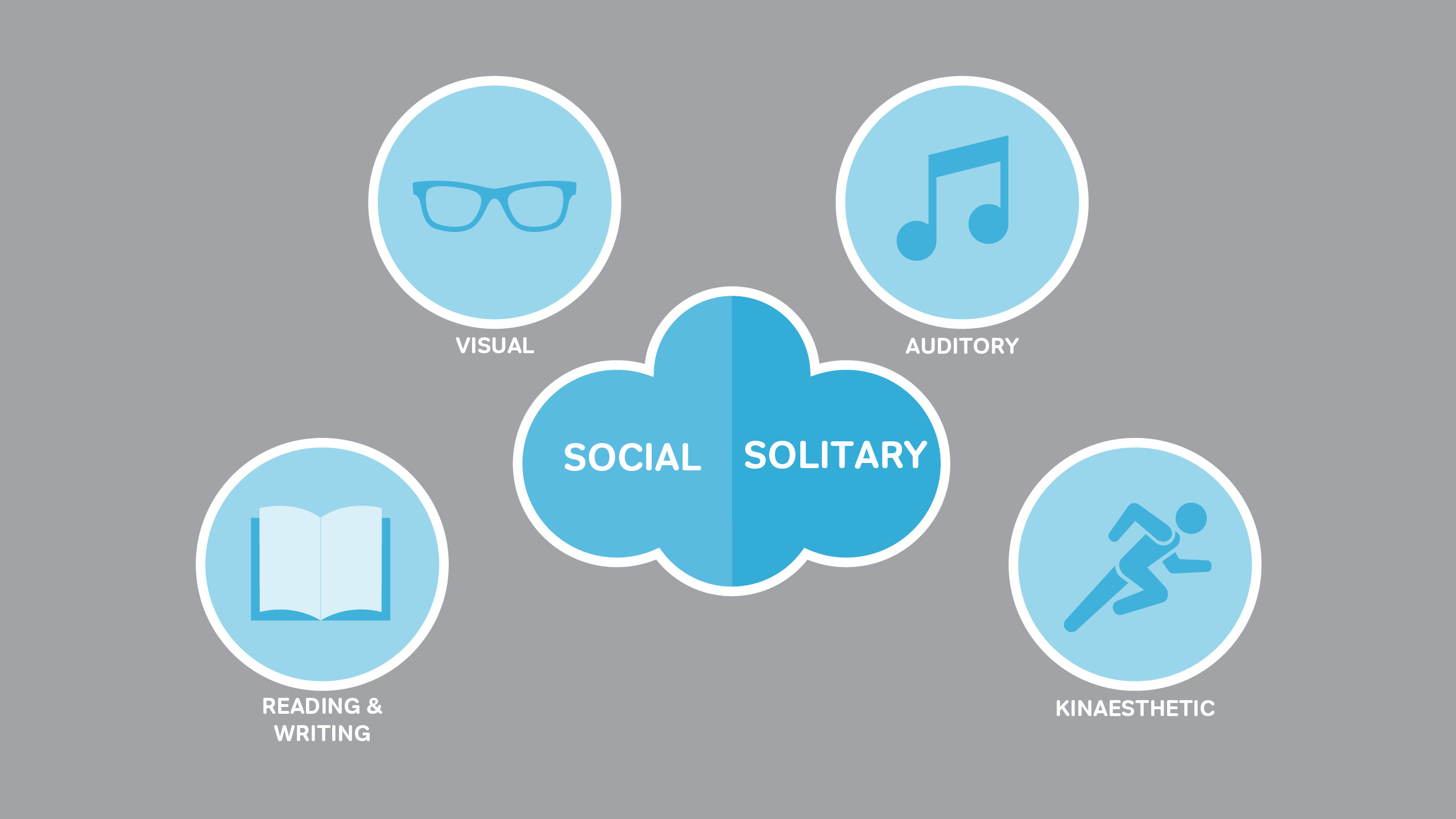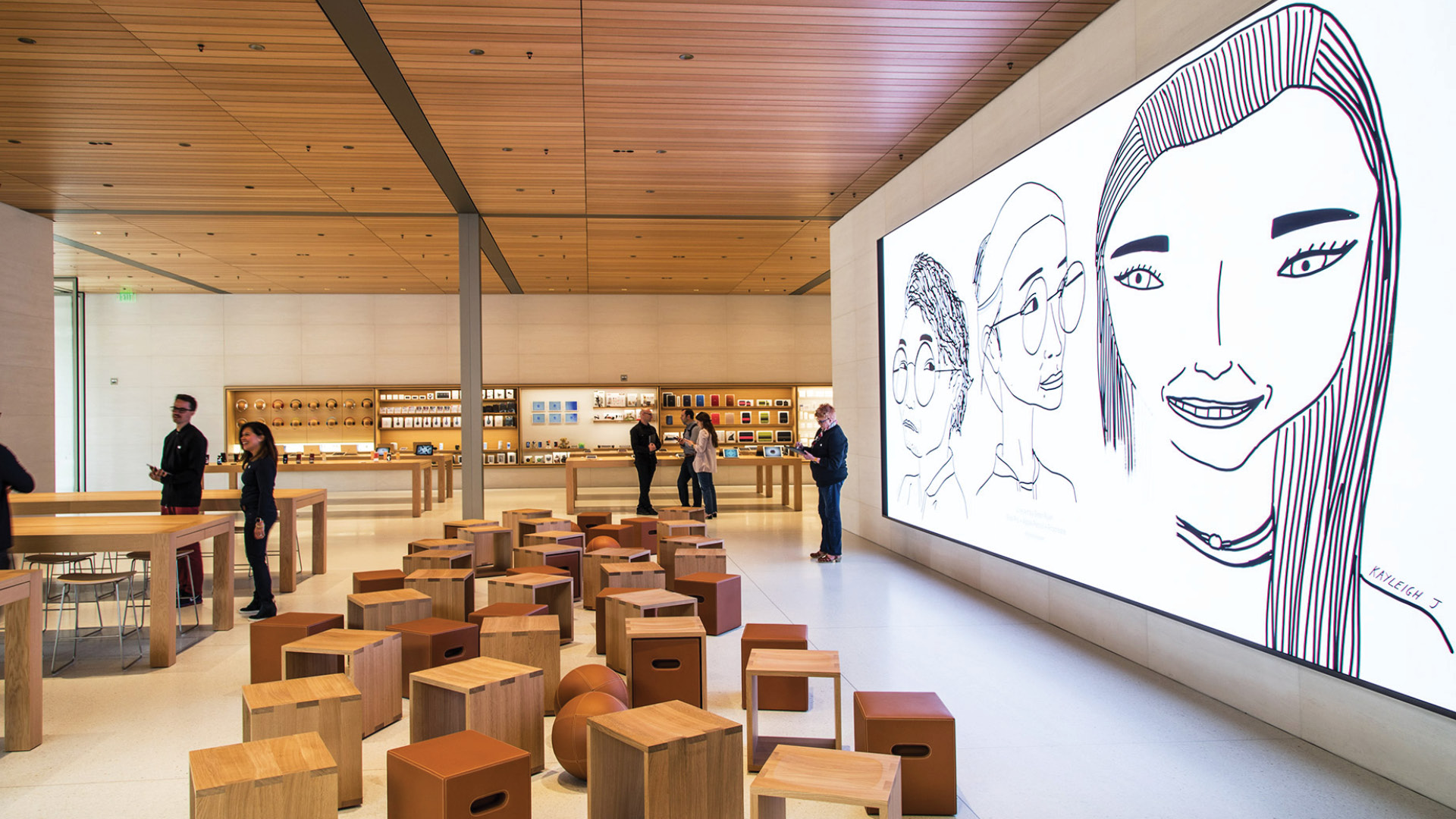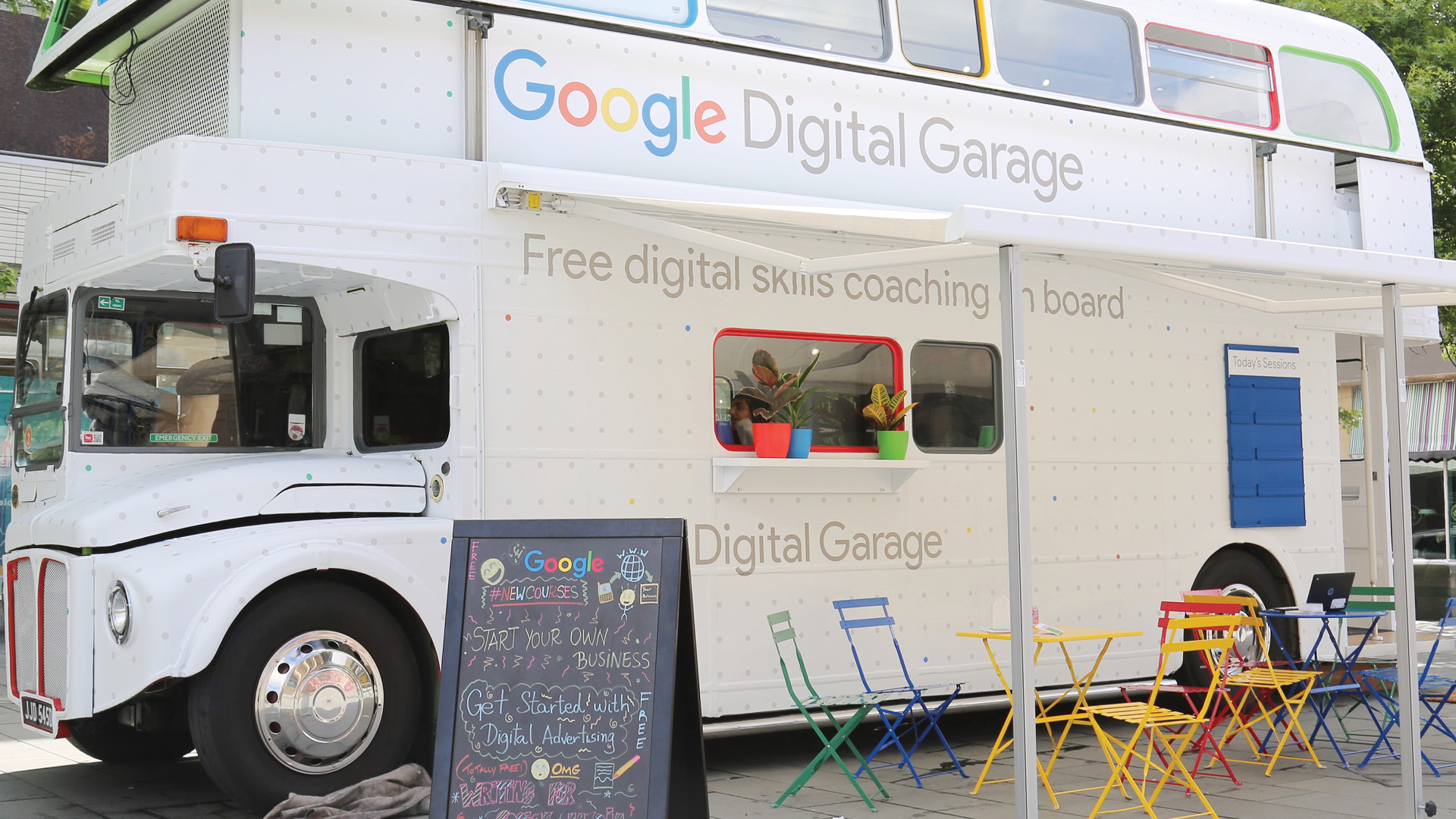The Educational Experience
Leading retail experience consultancy Quinine’s seven-part webinar series discusses, defines and validates the meaning of ‘retail experience’. Here, Quinine’s Alex and Ian take a deep dive into the meaning of the educational experience within retail.
In a previous episode we introduced our overarching ‘Experience Framework’ tool. In this article, we look in depth at ‘The Educational Experience’ element of that framework and its crucial role in forging a deeper connection with the retail customer.

How Quinine sees Education – and Educational Missions - goes beyond learning in the sense of simply taking in knowledge. We define education more broadly as self-improvement: a process of improving oneself either mentally or physically. Mental Improvement can take the form of someone educating themselves, taking in knowledge and learning skills, whereas physical Improvement can encompass everything from mastering a new sport to maintaining mobility in old age.
But why are we talking about Education? Why is it so important? At a primary level it is intrinsically linked to our survival as human beings. The desire for education is innate within us: we are curious; we like to understand and explore. Through this we first learnt how to hunt and gather and then to evolve our societies. On another level, education is about self-fulfilment and in some cases our status within society. Today, as we become ever more connected and more aware of opportunity and potential, our appetite to improve and transform ourselves is greater than ever before.

So, what is our mindset when seeking out these educational and transformative opportunities? In search of learning people might ask themselves a series of questions: What do I want to improve at? How much does it cost? When do I want (or need) to improve by? But, more importantly they might ask: How do I improve? Who can help me improve? and Where can I improve?
How people typically learn (or improve) can be divided into four key methods, the visual; the auditory; reading and writing; and the kinaesthetic (sensory). So, when considering where to improve retail is perfectly positioned to deliver educational experiences. It is able to offer people a powerful combination of all four of these learning methods in one place.

In today’s highly connected digital world consumers are faced with more choice and more complexity within their lives, including in the products and services available to them. Modern life is complicated and there is more of a need to learn and improve today than ever before. So, whilst some of the traditional institutions – such as the library - are not supporting people’s learning enough and are struggling to adapt to the needs of today’s connected consumer; is the new educational institution the retail flagship store?
We see now that people are more willing to turn to brands and trust brands with the provision of education – the ‘who’ in the Educational Mindset – and some businesses are excelling at providing learning opportunities in their stores and naturally, Apple is a great example. They are not just providing education on their own tech products and services but offering experiences that align with Apple’s values. Their photography and sketching walking tours are just one of the new innovative learning experiences designed to give people deeper insight into their craft, experimenting with new techniques and styles.

So how can individual retailers facilitate Educational Missions? At Quinine we define in-store educational interventions as ‘incidental’ and ‘immersive’. The incidental is about informing people and raising awareness; the provision of information. An example of this is a beautifully clear and informative product display like those in the Allbirds shoe stores. The immersive is about transformation, which is where self-improvement truly happens. Think about the Yoga classes held in Lululemon stores.


Whilst Incidental interventions are important and provide the foundation of an educational experience in-store, a strategy of just offering information or raising awareness will only go so far. Consumers expectations of an in-store experience now goes beyond the simple delivery of information; something they can likely achieve online. People now demand something more engaging. More importantly, if a retail brand can successfully deliver educational experiences that are more immersive, their customers are more likely to connect more deeply with the brand. This idea aligns well to the ancient Chinese proverb:



Tell Me and I’ll forget. Show me and I’ll remember. Involve me and I’ll understand.
Involving the customer in an immersive and engaging way, supported by all four ways of learning, not least the kinaesthetic, can be truly educational, self-improving and transformative
Looking at education through the lens of our Retail Experience Framework, we see how it can be integrated at many stages of the customer journey in-store. In particular, the ‘Discover’, ‘Consult’ and ‘Aftersales’ stages are three really powerful moments to deliver education in retail.
We see how Glossier, the online cosmetics brand with a bricks and mortar store, has put its expert staff at the centre of its product displays where they ‘consult’ customers on their needs, making appropriate product recommendations.




The aftersales part of the customer journey involves learning how to get the most out of the products you have purchased. It is also an excellent place to nurture brand loyalty. We note how the educational mission thrives at Google Digital Garage, a physical store experience where the brand invites customers to acquire new skills to help them in the digital world; a pure aftersales moment enabling the consumer to improve themselves.

Retail stores are a new form of educational institution. However, education for education’s sake is not enough. It is crucial that Retail brands consider carefully the educational interventions they make (whether they be Incidental or Immersive) to ensure they resonate well with their brand values and the customers’ expectations.
We see a number of retailers leveraging educational interventions in their stores exceptionally well. As these stores demonstrate, providing meaningful and appropriate self-improvement opportunities to customers, using a mix of the incidental and the immersive, is an incredibly powerful way to deepen customer trust and loyalty to their brand.
This article is Episode 05 of Quinine’s webinar series on the topic of ‘What is Experiential Retail?’. Details of all other titles can be found here:

